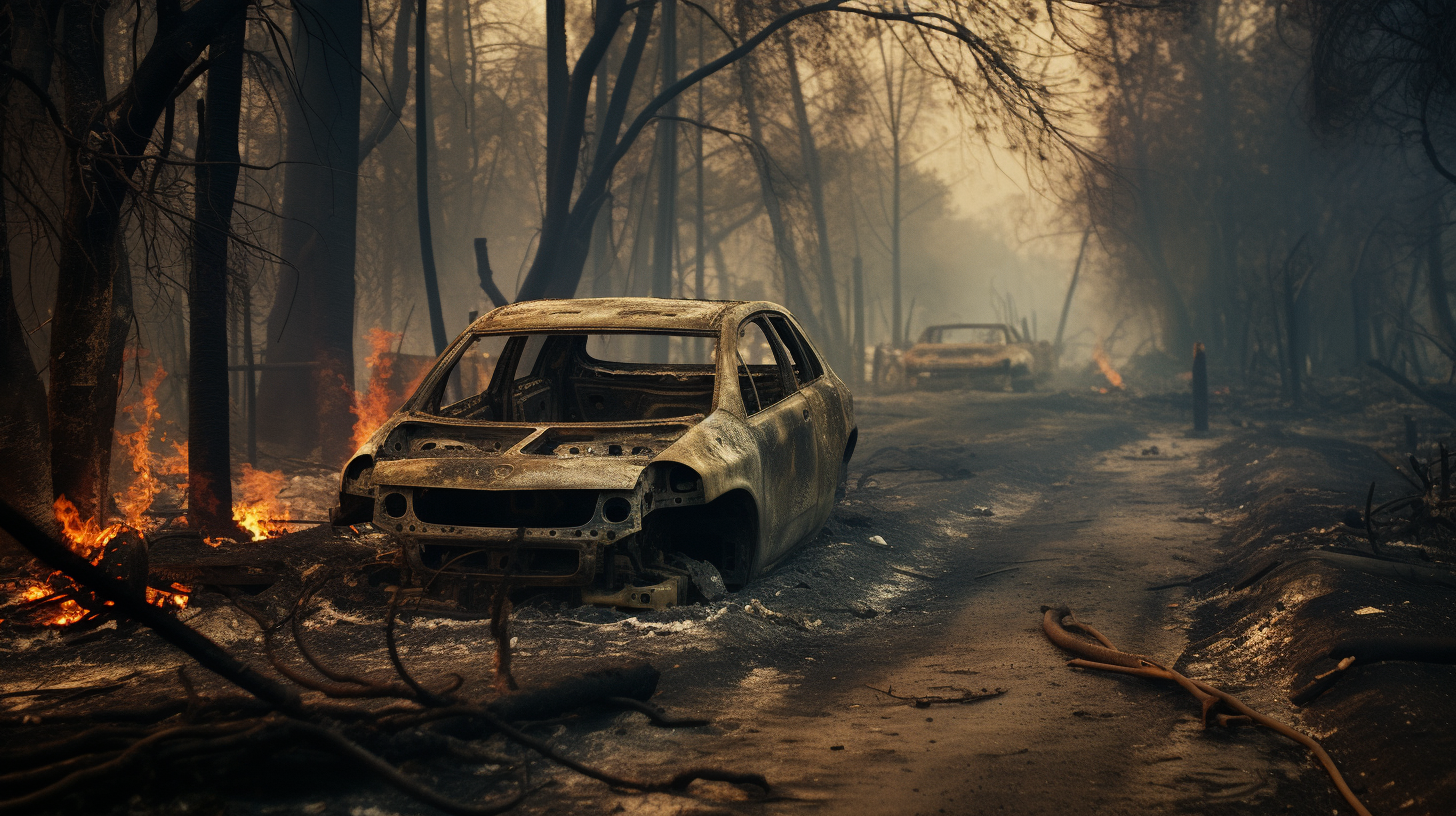In the gloomy aftermath of yet another season of devastating wildfires, we are compelled to gaze upon what remains. The stark landscape, where verdant once dominated, whispers the haunting truth of what may become a perennial reality. It is not simply the scorched earth that lays bare before us; it is a forewarning of the charred future we are hurtling towards in this unchecked blaze of environmental neglect. Welcome to the aftermath, where the inferno’s end is only the beginning.
‘After the Inferno’ is not just an idiom but a literal guide to understanding the ecological sequelae consequent to the all-consuming flames. Science beckons us to acknowledge that the fiery tendrils licking into skies were not just incinerating trees, but the very fabric of ecosystems. What follows are soil infertility, loss of habitat, and further endangerment of already gasping species, drawing a bleak map of biological desertification.
Imagine standing in the middle of what was once a flourishing forest, now a cemetery of blackened tree skeletons. The air is thick, acrid — a constant reminder that the atmosphere’s composition is being toxified with every flame that rises. The ashen ground beneath one’s feet is deceptive; ready to crumble and erroneously signaling that life as it was known is irrecoverable. Amid this post-apocalyptic environment, the reality of wildfires’ effects on climate becomes undeniable.
Wildfires are a natural phenomenon, an elemental force designed to reset and renew. However, human actions have morphed these natural events into uncontrollable monsters of destruction. Our prior editorial, ‘Forests to Ashes, Cities Keep Burning’, made it lamentably clear that the expansive burning for urban sprawl and industrial growth is perpetuating this cycle. It underscored the catastrophic bridge between the eradication of natural firebreaks and the increased susceptibility of our cities to conflagrations.
The infusion of urban elements in fire-prone landscapes has created a new breed of firestorms that defy traditional firefighting methods. Homes and businesses designed without considering the ingrained wildfire risk become kindling, in a dance of destruction that blurs the line between human-made structures and natural foliage. This amalgamation, tragically, sustains the fires, allowing them to proliferate and propagate more miseries unto the horizon.
In confronting wildlife tragedies, we’re exposed to a litany of stories where fauna flees for dear life, often to no sanctuary. Animal refugees of wildfires face uncertain futures, if they survive at all. The phoenix’s fable is no comfort here; rebirth from ashes seems an unattainable fantasy when faced with ravaged habitats that no longer offer nourishment or shelter. The voraciousness of this reality eats away at any idea of persistence or resilience nature might harbor.
Human health is inexorably tied to this equation. The wildfires’ smoke doesn’t discriminate, permeating lungs and lives with equal invasion, resulting in an array of respiratory and cardiovascular illnesses. Mental health, too, takes a critical hit, for the blackened landscape is a stark reminder of what was and what might never be again.
But let us delve deeper into the burning heart of the matter, metaphorically, for the literal would be far too perilous. Fuel — dead wood, dense underbrush, and parched lands — waits patiently for a spark. But not all fuel is timber and brush; it is also the carbon-rich atmosphere, where every tree burned is carbon released, every acre of forest lost is a missed opportunity in the battle against global warming. This fiery exchange illustrates the duality of cause and consequence that wildfires present in the climate narrative.
Technological advancements aim to provide predictive analytics for fire mitigation. Yet, as we adopt sophisticated modeling and satellite monitoring, one realizes these are but band-aids on a hemorrhage. Can we innovate quickly enough to outpace the spread of disasters we have ourselves accelerated?
What we face is not just an environmental challenge, but a societal one too. As our ecosystems crumble, so does the essence of what makes humanity thrive — our collective resilience and ingenuity. Can we gaze into the flames and find reflection, or shall we succumb to the smoke, acknowledging the dystopic end as inevitable?
…And yet, despite the dire state we have painted, the inferno does eventually die out. The lingering question remains whether we can muster a phoenix-like revival or if we are resigned to be spectators of the ashen downfall. The future of wildfires is not only about how they burn but also about how we respond, adapt, and hopefully, overcome. It is up to us to decide whether the next inferno marks an ending or a new, albeit arduous, beginning.
